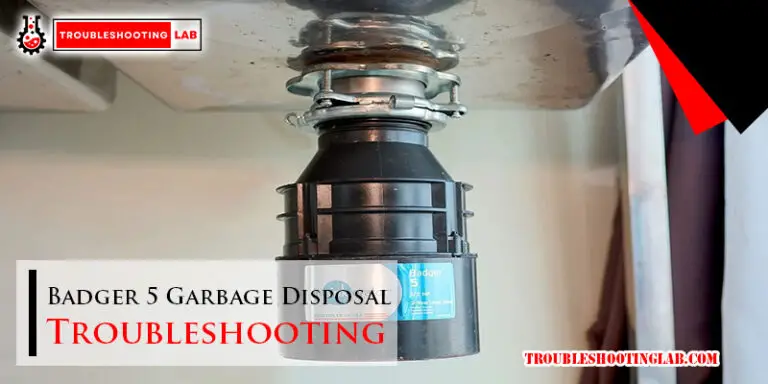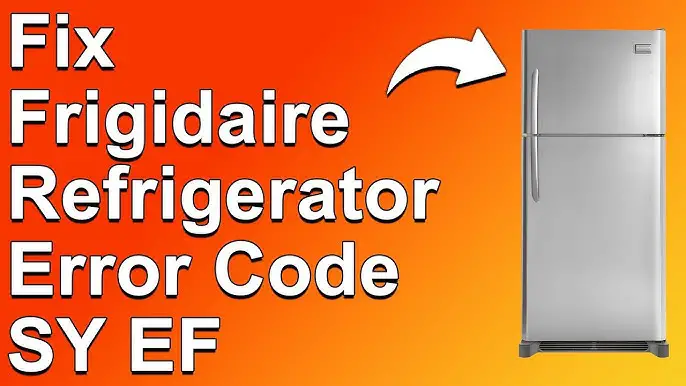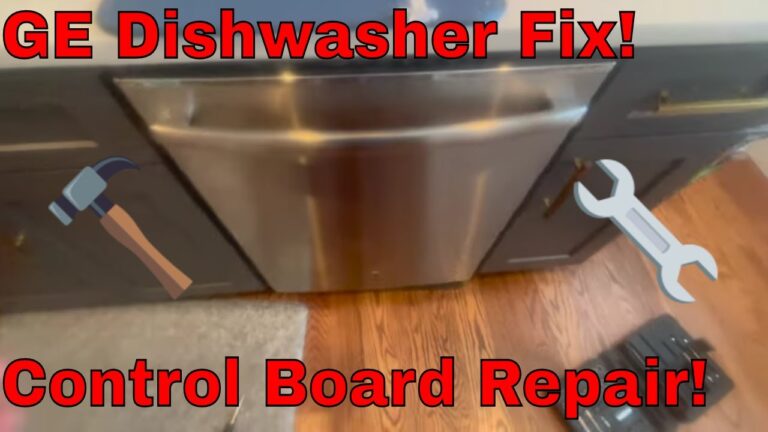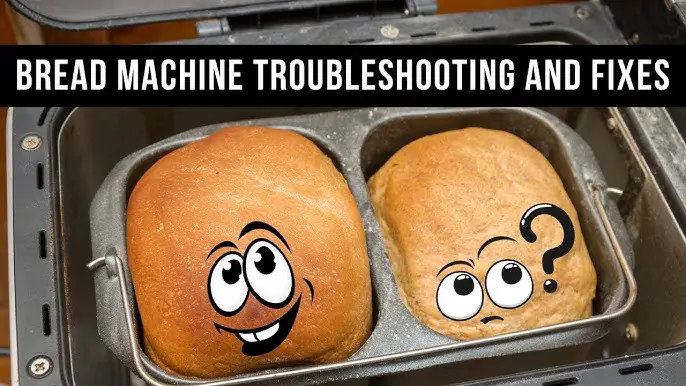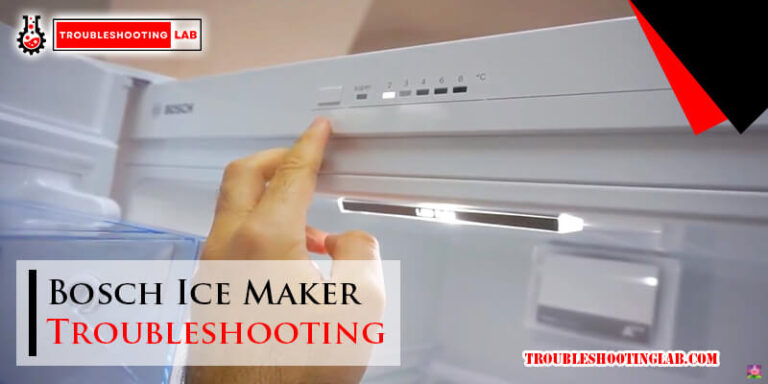Ge Ice Maker Troubleshooting: Quick Fixes to Restore Ice
Is your GE ice maker acting up, leaving you frustrated and wondering what went wrong? Don’t worry—you’re not alone.
Whether it’s not making ice, producing too little, or creating cubes that just don’t look right, these issues can be a real headache. The good news? Most problems have simple fixes that you can tackle yourself. In this guide, we’ll walk you through the most common GE ice maker issues and how to solve them step by step.
By the time you’re done reading, you’ll feel confident and ready to get your ice maker back in action. Let’s dive in and save you the hassle of expensive repairs!

Credit: www.youtube.com
Common Issues With Ge Ice Makers
GE ice makers are a fantastic addition to any kitchen, but like any appliance, they can run into problems. If your ice maker isn’t living up to its potential, you’re not alone. Understanding these common issues can save you time, frustration, and even a costly service call.
Ice Maker Not Producing Ice
If your GE ice maker isn’t making ice, it could be as simple as the ice maker being turned off. Check if the power switch is in the “On” position. You’d be surprised how often this is the issue!
Another possibility is a clog in the water supply line. Disconnect the line and inspect it for blockages. If it’s frozen, thaw it by unplugging the unit for a couple of hours.
Still no ice? The water filter might be overdue for a replacement. Dirty filters restrict water flow, so replace them every six months to keep things running smoothly.
Slow Ice Production
Is your ice maker taking forever to produce ice? The freezer temperature might be too high. GE recommends keeping it at 0°F (-18°C) for optimal ice production.
Overloading your freezer can also restrict airflow and slow down the process. Make sure there’s enough space for air to circulate freely.
Lastly, consider your household water pressure. Low pressure can delay ice-making. Test it with a water pressure gauge; it should be between 20 and 120 psi for proper function.
Leaking Water Issues
Water pooling around your ice maker? First, check the water line connections. A loose or damaged connection can cause leaks.
Inspect the ice maker’s fill valve as well. If it’s faulty, it might overfill the ice tray, leading to leaks. Replacing a fill valve is usually a straightforward fix.
Also, ensure the ice maker is level. If it’s tilted, water may spill instead of freezing properly. Use a spirit level to adjust its position.
Ice Maker Making Noise
A noisy ice maker can be annoying, but not all sounds mean trouble. Clicking or humming is normal during the ice-making cycle.
Loud grinding noises, however, could indicate a jammed ice tray. Turn off the ice maker and carefully remove any stuck ice.
If the noise persists, the motor might be struggling. Consider calling a technician to inspect and repair it.
Ice Quality Problems
Bad-tasting or cloudy ice can ruin your drink. Start by cleaning the ice maker and replacing the water filter. Over time, minerals and debris can accumulate, affecting taste and clarity.
Another culprit is the water source itself. Hard water can create cloudy ice. Using a water softener or bottled water can make a big difference.
If the ice cubes are too small or misshapen, check the water pressure and the fill settings on your machine. Adjusting these can improve ice quality significantly.
Troubleshooting your GE ice maker doesn’t have to be overwhelming. By tackling these common issues step-by-step, you’ll have your ice maker running like new in no time. Which of these tips worked for you? Let me know in the comments!
Checking Power And Settings
Experiencing issues with your GE ice maker can be frustrating. Troubleshooting begins by ensuring the basics are in place. Checking the power and settings often resolves common problems. Below are key steps to get your ice maker back on track.
Ensuring Power Connection
Start by checking if your ice maker is receiving power. Confirm the machine is properly plugged into the outlet. Look for any loose cords or connections. Inspect the outlet for damage or signs of wear. Test the outlet with another device to verify its functionality. If the outlet works, proceed to inspect the ice maker’s power switch. Ensure the switch is turned on and fully engaged.
Resetting The Ice Maker
A reset can resolve minor glitches in the ice maker. Locate the reset button on the device. Refer to your GE ice maker manual for the exact location. Press and hold the reset button for a few seconds. Wait for the machine to restart and recalibrate itself. Once done, check if the ice maker resumes normal operation.
Verifying Temperature Settings
The freezer temperature directly affects ice production. Ensure the temperature is set between 0°F and 5°F. Temperatures outside this range can hinder ice formation. Use a thermometer to confirm the freezer’s current temperature. Adjust the settings if necessary and wait a few hours. This allows the ice maker to stabilize and resume its cycle.
Inspecting Water Supply
Your GE ice maker depends on a reliable water supply to function properly. If your ice maker isn’t producing ice or is making smaller cubes than usual, the water supply might be the culprit. Let’s walk through a few practical steps to inspect and troubleshoot the water supply effectively.
Checking Water Line Connections
Begin by inspecting the water line that connects to your ice maker. Is it securely attached? Loose connections can restrict water flow, which directly impacts ice production.
Trace the line back to its source, like the water valve. Look for kinks or bends that may block water flow. If you notice any, straighten the line gently to restore proper water movement.
Don’t forget to double-check the valve itself. Is it fully open? Sometimes, a partially closed valve can drastically reduce water supply without you even realizing it.
Cleaning The Water Filter
A clogged water filter is one of the most common reasons for poor water flow to your ice maker. If your filter hasn’t been replaced in the last six months, it’s time to swap it out.
Consult your GE ice maker’s manual to locate the water filter. Usually, it’s a quick twist-and-pull removal process. Replace the old filter with a new one, ensuring it clicks securely into place.
After replacing it, run water through the system for a few minutes to flush out any trapped air or particles. This simple step can make a big difference in water flow and ice quality.
Testing Water Pressure
Low water pressure can also be a sneaky reason behind your ice maker woes. To check it, disconnect the water line and let it flow into a container. You should see a steady, strong stream.
If the flow seems weak, you might have a pressure issue with your home’s water supply. A pressure gauge can give you a precise reading—most ice makers need at least 20-40 psi to work efficiently.
Contact a plumber if your water pressure is consistently low. Fixing this issue not only helps your ice maker but improves water flow throughout your home.
Have you ever overlooked a minor water supply issue, only to realize it caused a bigger problem later? Don’t let that happen with your ice maker. Taking these small but essential steps can save you time, frustration, and possibly the cost of a service call.
Cleaning And Maintenance Tips
Keeping your GE ice maker clean and well-maintained is key to its performance and longevity. A little regular attention can save you from frustrating malfunctions and costly repairs. Let’s dive into actionable cleaning and maintenance practices that can make all the difference.
Removing Ice Blockages
Ice blockages can disrupt your ice maker’s ability to produce or dispense ice. Start by unplugging the machine to ensure safety. Check the ice chute or tray for clumps of ice that may be stuck together.
Use warm water to gently melt blockages. For stubborn clogs, a plastic spatula can help break them apart without damaging components. Make it a habit to check for blockages weekly—especially if you use your ice maker frequently.
Cleaning The Ice Maker Components
A clean ice maker equals cleaner, fresher ice. Begin by removing any detachable parts like the ice bin, water reservoir, or ice tray. Wash these components with warm soapy water and rinse thoroughly.
Wipe down the interior with a soft cloth soaked in a mixture of water and white vinegar. Vinegar helps dissolve any mineral buildup and kills bacteria. Be sure to dry all parts before reassembling to avoid moisture-related issues.
Preventing Mold And Mildew
Mold and mildew thrive in damp, dark places like ice makers. After cleaning, leave the ice maker open to air out for a few hours. This step helps eliminate residual moisture that encourages mold growth.
Consider using a water filter to minimize contaminants that contribute to mold. Always discard old ice if your machine has been idle for days—it’s better to start fresh than risk contamination. How often do you sanitize your ice maker to keep it safe for your family?
Regular cleaning and maintenance ensure your ice maker runs efficiently and produces ice you can trust. By taking these simple steps, you’ll enjoy consistently clean and great-tasting ice for years to come.
Troubleshooting Advanced Problems
Advanced ice maker problems can be frustrating and complex. These issues often require more attention than basic fixes. Understanding the root cause can help restore your GE ice maker’s functionality. Below are some key areas to check when dealing with advanced problems.
Addressing Faulty Sensors
Faulty sensors can prevent your ice maker from working properly. Sensors monitor the ice-making process and send signals to start or stop production. If they fail, the machine may produce no ice or too much ice. Check for dirt or debris on the sensor. Clean it gently with a soft cloth. Ensure the sensor is properly aligned and not loose.
If cleaning doesn’t solve the issue, the sensor may need replacement. Consult your user manual to locate the sensor. Order a compatible replacement part online or through GE’s service center.
Fixing Broken Ice Maker Parts
Broken parts inside the ice maker can halt its operation. Common issues include damaged water lines, cracked ice trays, or worn-out motors. Inspect the water line for leaks or blockages. Replace it if you notice visible damage.
Examine the ice tray for cracks or wear. A damaged tray can affect ice production. Replace it with a new one that fits your model. If the motor fails, you might hear unusual sounds or see no ice being made. Locate the motor in your unit and ensure it’s securely connected. If needed, replace it following the manufacturer’s guidelines.
When To Call A Professional
Some problems go beyond DIY fixes and require professional help. If the ice maker doesn’t work after replacing faulty parts, call an expert. Electrical problems or internal wiring issues should be handled by trained technicians. Attempting these repairs yourself can cause further damage.
Seek professional service for recurring issues or major malfunctions. A licensed technician has the tools and expertise to diagnose and fix the problem efficiently.
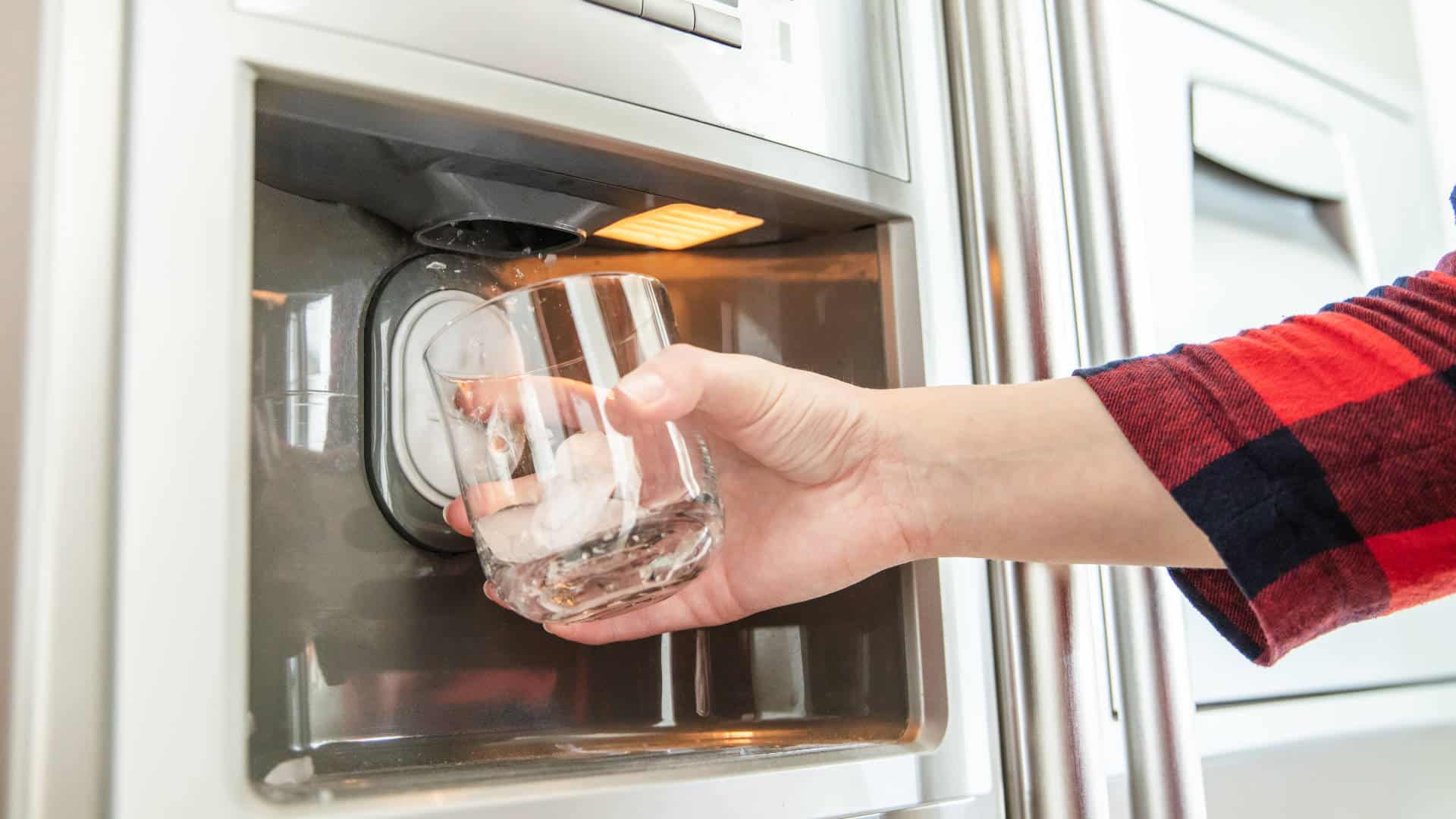
Credit: d3appliance.com
Preventing Future Ice Maker Issues
Your GE ice maker is a convenient appliance, but like any machine, it benefits from a little care to keep running smoothly. Small, consistent efforts can prevent those frustrating moments when your ice maker stops working right when you need it most. Let’s look at how you can protect your ice maker from future issues with some simple, proactive steps.
Regular Maintenance Practices
Cleaning your ice maker regularly is essential. Residue from hard water, dust, and debris can build up over time and impact performance. Use a soft cloth and a mild cleaning solution to wipe down the ice maker’s interior every few months.
Check for frost buildup in the freezer compartment. Excess frost can block the ice maker’s mechanisms. If you notice frost, defrost the freezer to prevent ice production issues.
Don’t forget to inspect the water supply line. Look for kinks or leaks that could reduce water flow to the ice maker. A quick visual check can save you from costly repairs later.
Using Compatible Filters
Always use filters that are compatible with your GE ice maker. Using the wrong filter can restrict water flow or allow impurities into the system, leading to clogs. Check your user manual or GE’s website to confirm which filters work best for your model.
Replace the water filter as recommended, usually every six months. Overused filters can reduce water quality and slow down the ice-making process. Set a reminder on your phone so you don’t forget this simple but crucial step.
If you’re unsure whether your filter is due for replacement, look for signs like smaller ice cubes or a strange taste in your ice. These are clear indicators your filter needs attention.
Monitoring Ice Maker Performance
Take a moment to observe your ice maker’s performance every week. Are the ice cubes the right size? Is the ice production keeping up with your needs? Spotting changes early can help you address small issues before they become serious.
Listen for unusual noises. Clicking, buzzing, or grinding sounds may signal a problem with the motor or other components. Don’t ignore these sounds, as they could lead to a complete breakdown if left unchecked.
Track how often you empty the ice bin. If it’s suddenly filling slower than usual, it might indicate a blockage or reduced water flow. Acting quickly can prevent a full shutdown of your ice maker.
By sticking to these simple practices, you’ll not only extend the life of your GE ice maker but also ensure it delivers fresh, clean ice whenever you need it. How will you make these steps part of your routine?

Credit: codysappliancerepair.com
Conclusion
Fixing a GE ice maker doesn’t have to feel overwhelming. Start with simple checks like power and water supply. Clean the unit regularly to avoid common issues. Replace faulty parts if needed, following your user manual. For persistent problems, professional help might be the best option.
Regular maintenance can extend your ice maker’s lifespan and improve performance. Take small steps to keep it running smoothly. A little effort now can save you trouble later. With these tips, you’re ready to handle most ice maker issues confidently.


